The document discusses the importance of industrialization for economic development and growth. It states that industrialization is key to utilizing resources effectively and generating employment. Rapid industrialization is needed to absorb excess agricultural workforce and promote sectors like education and infrastructure development. The document advocates for industrialization across all regions to help solve economic issues.
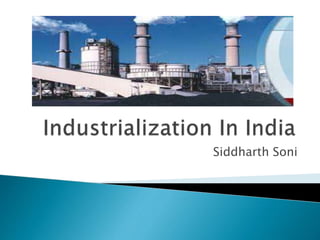
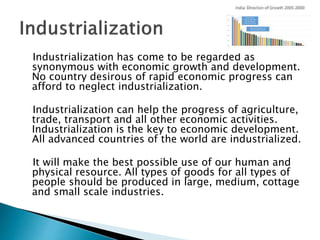

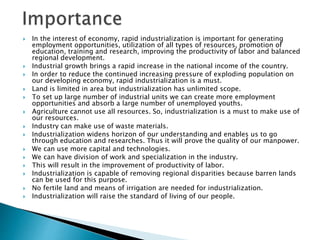
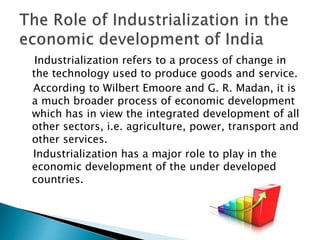




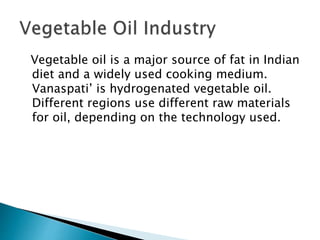





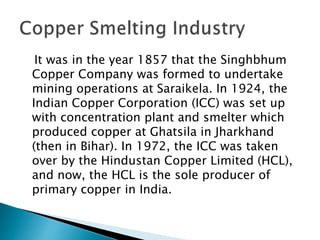








![Make in India is an initiative launched by the
Government of India to encourage multi-
national, as well as national companies to
manufacture their products in India. It was
launched by Prime Minister Narendra Modi on 25
September 2014.[1] India would emerge, after
initiation of the program(and if successful) in
2015, as the top destination globally for foreign
direct investment, surpassing the United States
of America as well as China .[2][3][4] India
received US$63 billion in FDI in 2015.[5]](https://image.slidesharecdn.com/industrialization-160707081638/85/Industrialization-25-320.jpg)
![Narendra Modi and Cabinet ministers at the concluding session
of the national workshop on Make in India in New Delhi, 10
December 2014
Prime Minister Narendra Modi launched the Make in India
program on 25 September 2014 in a function at the Vigyan
Bhavan.[1] On 29 December 2014, a workshop was organized by
the Department of Industrial Policy and Promotion which was
attended by PM Modi, his cabinet ministers and chief secretaries
of states as well as various industry leaders.[6]
The major objective behind the initiative is to focus on job
creation and skill enhancement in 25 sectors of the economy.[7]
The initiative also aims at high quality standards and minimizing
the impact on the environment.[8][9] The initiative hopes to
attract capital and technological investment in India.[7]
The campaign was designed by Wieden Kennedy.[10]](https://image.slidesharecdn.com/industrialization-160707081638/85/Industrialization-26-320.jpg)
![Under the initiative, brochures on the 25 sectors and a web portal were
released. Before the initiative was launched, foreign equity caps in
various sectors had been relaxed. The application for licenses was made
available online and the validity of licenses was increased to three years.
Various other norms and procedures were also relaxed.[11]
In August 2014, the Cabinet of India allowed 49% foreign direct
investment (FDI) in the defense sector and 100% in railways
infrastructure. The defense sector previously allowed 26% FDI and FDI
was not allowed in railways. This was in hope of bringing down the
military imports of India. Earlier, one Indian company would have held
the 51% stake, this was changed so that multiple companies could hold
the 51%.[12]
Between September 2014 and November 2015, the government received
₹1.20 lakh crore (US$18 billion) worth of proposals from companies
interested in manufacturing electronics in India.[13]
24.8% of smart phones shipped in the country in the April–June quarter
of 2015 were made in India, up from 19.9% the previous quarter.
[14][15][16]](https://image.slidesharecdn.com/industrialization-160707081638/85/Industrialization-27-320.jpg)
![With the demand for electronic hardware
expected to rise rapidly to US$400 billion by
2020, India has the potential to become an
electronic manufacturing hub.[17] The
government is targeting to achieve net zero
imports of electronics by 2020 by creating a
level playing field and providing an enabling
environment. It makes the Indian economy
better.[17]](https://image.slidesharecdn.com/industrialization-160707081638/85/Industrialization-28-320.jpg)


